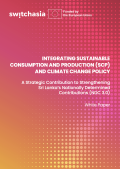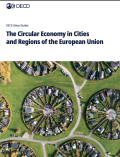
Driven by population growth and urbanization, the building sector is a significant contributor to economic growth. Urban centres provide opportunities for a range of social and cultural activities, as well as being critical for innovations in science, technology and education. Indeed, urban areas are of critical importance for social and economic development (UNEP, 2014). However, with approximately 40 percent of global energy use taking place within buildings, this sector is also the single largest contributor to global greenhouse gas (GHG) emissions.
As a result, the design and use of energy and resource-efficient buildings has a key role in climate change mitigation to accelerate the global green economy transition. Although vast savings are possible by constructing new green buildings and retrofitting existing buildings, even greater gains can be achieved by adopting a long-term “life-cycle” approach involving stakeholders at different stages – from environmentally-minded investors and architects, to sustainable extraction, construction and usage, and the eventual demolition and the recycling or disposal of the building materials.
Relevance to SDGs
Green buildings will have a role in achieving the Sustainable Development Goals (SDG) 11, specifically target 11.c, which calls for support for least developed countries, including through financial and technical assistance, in building sustainable and resilient buildings utilizing local materials.
The real estate sector offers huge green investment opportunities due to the commercial potential of energy efficiency and climate-related investments, from asset value improvement to long-term risk reductions. According to the World Green Building Council, an estimated 230 billion m² of additional buildings will be constructed over the next 40 years, and a US Green Building Council survey found that 57% of building owners are interested in making the majority of their future construction projects ‘green’.
In addition to new construction, existing buildings are being retrofitted to become more environmentally friendly through projects such as upgrading to energy-efficient appliances, installing renewable energy sources, adding green roofs that reduce air-conditioning costs and manage stormwater, and using sustainable materials for insulation to reduce heating and cooling costs. It is estimated that many green building investments pay for themselves in energy savings within an average 6 years and also increase the property value of a building by an average of 7%.
The scale of the investment opportunity in energy efficiency building retrofits globally will be around US$300 billion annually by 2020. However, the current rate of private sector investments flowing into this opportunity is just a fifth of that which is required to stay within the below 2°C pathway.














